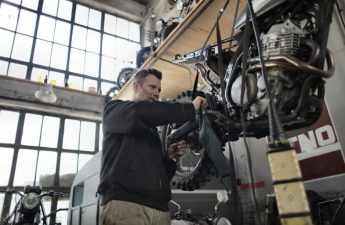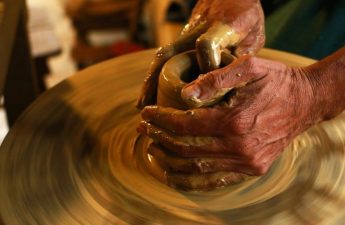The Yamaha Sun Classic, a popular 1980s gas golf cart model, requires specific repair manuals for maintenance and repairs. These manuals provide detailed instructions, ensuring optimal performance and longevity. DIY enthusiasts and owners rely on genuine Yamaha manuals for accurate guidance, avoiding guesswork and potential safety risks. With the rise of vintage cart restoration, accessing these manuals has become essential for preserving the reliability and functionality of these classic vehicles.
Overview of the Yamaha Sun Classic Golf Cart
The Yamaha Sun Classic, also known as the G3E, is a well-liked golf cart from the 1980s, celebrated for its robust build and dependable performance. It features a gas-powered engine, making it a favorite among golfers and collectors. The G3E was later succeeded by the G5 model, but its classic design and durability have kept it popular. Owners often appreciate its ease of maintenance, and identifying the model year can be done by locating the serial number under the cart. This cart’s enduring appeal lies in its combination of style, functionality, and the availability of repair resources.
Importance of Repair Manuals for Maintenance and Repair
Repair manuals are essential for maintaining and repairing the 1980s Yamaha Sun Classic golf cart. They provide detailed instructions, diagrams, and specifications to help owners and technicians diagnose and fix issues effectively. These manuals ensure proper troubleshooting, reducing the risk of further damage or safety hazards. They also guide users in performing routine maintenance, such as oil changes and battery care, to extend the cart’s lifespan. By following the manual, users can identify genuine Yamaha parts, ensuring compatibility and reliability. Whether addressing common issues or complex overhauls, a repair manual is indispensable for keeping the Yamaha Sun Classic in optimal condition and operational safety.
Key Features of 1980s Yamaha Sun Classic Golf Carts
The 1980s Yamaha Sun Classic golf cart is renowned for its durability and performance. It features a robust 2-stroke or 4-stroke gas engine, offering reliable power for various terrains. The cart’s lightweight yet sturdy frame ensures easy maneuverability while maintaining stability. Its simple yet efficient design includes a compact chassis, making it ideal for golf courses and recreational use. The Sun Classic also boasts an ergonomic seating arrangement, providing comfort for passengers. Additionally, its electrical system is straightforward, with minimal components, reducing the complexity of repairs. The cart’s popularity stems from its fuel efficiency, low maintenance requirements, and enduring reliability, making it a favorite among golf enthusiasts and collectors alike.

Locating Genuine Yamaha Repair Manuals
Genuine Yamaha repair manuals are essential for accurate and safe repairs. They are available through Yamaha’s official website and authorized dealers, ensuring authenticity and reliability.
Official Yamaha Online Manual Site
The official Yamaha online manual site offers authentic repair manuals for the 1980s Sun Classic golf cart. This platform provides easy access to detailed diagrams, troubleshooting guides, and step-by-step repair instructions. Manuals are available in downloadable PDF formats, ensuring convenience for owners. The site is user-friendly, with search options by model year and serial number. It covers engine, electrical, and braking systems, making it a one-stop resource for DIY enthusiasts and professionals. Regular updates ensure compatibility with older models, while secure downloads guarantee safety and reliability for all repair needs.
Authorized Dealers and Distributors
Authorized Yamaha dealers and distributors are trusted sources for genuine repair manuals and parts for the 1980s Sun Classic golf cart. These dealers provide original equipment manufacturer (OEM) manuals, ensuring accuracy and compatibility. They often offer comprehensive resources, including detailed diagrams and troubleshooting guides. Contacting local or regional Yamaha dealers can help owners access hard-to-find manuals or older model-specific documentation. Additionally, authorized distributors may provide expert advice and support, making them a reliable option for maintaining and repairing vintage Yamaha golf carts. Their expertise ensures owners can confidently perform repairs using authentic materials.
Third-Party Sources for Manuals
Third-party sources can be a convenient option for locating repair manuals for the 1980s Yamaha Sun Classic golf cart. Online marketplaces like eBay and specialized forums often have listings for vintage manuals. Additionally, enthusiast communities and independent sellers may offer scanned or reprinted versions of these manuals. While these sources can be cost-effective, ensure the materials are complete and accurate. Be cautious of unofficial or incomplete documents, as they may not cover all necessary repairs. Verifying the seller’s reputation and the manual’s authenticity is crucial before making a purchase. These alternatives can be helpful when official sources are unavailable.
Downloadable PDF Versions of Manuals
Downloadable PDF versions of 1980s Yamaha Sun Classic golf cart repair manuals offer a convenient and accessible solution for owners. These digital files can be easily stored on computers, tablets, or smartphones, providing instant access to repair instructions. Official Yamaha websites and authorized dealers often provide PDF manuals for purchase or download. Additionally, third-party websites specializing in vintage manuals may offer scanned versions. PDFs are searchable, making it easier to find specific procedures. Ensure the PDF is complete and accurate, as incomplete versions may omit critical information. Always verify the source to avoid downloading unauthorized or incomplete manuals.

Understanding the Yamaha Sun Classic Golf Cart Components
The Yamaha Sun Classic features a robust design with key components like the engine, electrical system, brakes, suspension, and transmission, each essential for smooth operation and longevity.
Engine and Fuel System Overview
The Yamaha Sun Classic golf cart from the 1980s is equipped with a reliable single-cylinder, four-stroke gas engine. The engine powers the cart through a straightforward fuel system, including a carburetor, fuel tank, and intake manifold. Regular maintenance, such as cleaning the air filter and inspecting fuel lines, is crucial to ensure optimal performance; Over time, components like the carburetor may require adjustment or rebuilding to maintain proper fuel flow. Neglecting these tasks can lead to issues such as decreased power or rough idling. Proper care of the engine and fuel system is essential for longevity and reliable operation.
Electrical and Ignition Systems
The 1980s Yamaha Sun Classic golf cart features a simple yet essential electrical system. The ignition system includes a coil, spark plug, and wiring harness, which work together to ignite the fuel-air mixture. The voltage regulator ensures proper battery charging, while the starter solenoid activates the engine. Over time, components like the spark plug and ignition coil may wear out, requiring replacement. Corrosion in electrical connections can also cause issues, such as intermittent starting or stalling. Regular inspection and cleaning of wiring and connections are vital to maintain reliable operation and prevent electrical failures.
Braking and Suspension Components
The braking system on the 1980s Yamaha Sun Classic golf cart relies on a mechanical drum brake setup, with a brake pedal connected to cables that actuate the rear brakes. Over time, brake shoes and drums can wear out, requiring replacement. The suspension system includes leaf springs and shock absorbers, providing stability and a smooth ride. Regular inspection of brake cables and suspension components is essential to ensure safety and performance. Replacing worn brake shoes and lubricating moving parts can prevent sudden failures. Proper alignment of the braking system ensures even wear and reliable stopping power for the cart.
Transmission and Drive System Details
The 1980s Yamaha Sun Classic golf cart features a Continuously Variable Transmission (CVT), which provides smooth power delivery across various speeds. The drive system includes a belt-driven mechanism and a rear-wheel-drive layout. Over time, the CVT belt may wear out, requiring replacement to maintain performance. The differential housing distributes torque to the rear wheels, while the drivetrain components, such as axles and gearboxes, ensure reliable operation. Regular inspection of belts, pulleys, and fluid levels is crucial to prevent premature wear. Lubricating moving parts and aligning the drivetrain ensures optimal functionality and extends the cart’s service life.
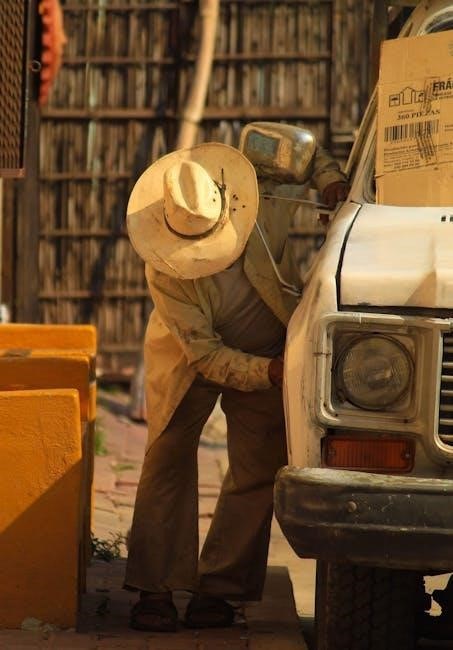
Common Repairs and Maintenance Tasks
Regular maintenance for 1980s Yamaha Sun Classic golf carts includes checking fuel lines, cleaning air filters, and inspecting brakes. Addressing these issues prevents major repairs.
Troubleshooting Fuel System Issues
Troubleshooting fuel system issues in 1980s Yamaha Sun Classic golf carts often starts with checking for blockages or damage in the fuel line. A clogged fuel filter or faulty carburetor can cause poor engine performance or failure to start. Inspect the fuel tank for rust or corrosion, which may contaminate the fuel. If the cart runs rough, it could indicate a faulty fuel pump or vacuum leak. Always refer to the repair manual for specific diagnostic steps and procedures to ensure accurate repairs and maintain optimal performance.
Replacing Brake Pads and Shoes
Replacing brake pads and shoes on a 1980s Yamaha Sun Classic golf cart is essential for maintaining safe stopping power. Start by removing the wheels and inspecting the brake assembly. Disconnect the brake cable and caliper, then remove the old pads and shoes. Clean the area thoroughly before installing new components. Reassemble in the reverse order, ensuring proper alignment and adjustment. Tighten all connections securely and test the brakes to confirm proper function. Always use genuine Yamaha parts for reliability and safety, and consult the repair manual for specific torque specifications and detailed instructions.
Servicing the Electrical System
Servicing the Electrical System
Servicing the electrical system of a 1980s Yamaha Sun Classic golf cart involves checking the battery, ignition switch, solenoid, and wiring. Start by inspecting the battery terminals for corrosion and ensuring they are tightly connected. Test the voltage to confirm proper charge. Inspect the ignition switch and solenoid for wear or damage, replacing them if necessary. Check all wiring connections for integrity and cleanliness. Replace any blown fuses or faulty components. Use a multimeter to test circuit continuity. Always consult the repair manual for specific procedures and diagrams. Regular electrical maintenance ensures reliable performance and prevents potential issues during operation.
Inspecting and Replacing Tires
Inspecting and replacing tires on a 1980s Yamaha Sun Classic golf cart is essential for safety and performance. Check tread depth using a gauge, ensuring it meets the manufacturer’s minimum specification. Look for cracks, uneven wear, or signs of aging. Inflate tires to the recommended pressure, found in the repair manual. If replacement is needed, ensure the new tires match the original size and load rating. Tighten lug nuts in a star pattern to the specified torque. Regular inspections prevent flats and improve handling. Always use a tire pressure gauge for accuracy and refer to the manual for diagrams and guidelines.

Tools and Equipment Needed for Repairs
- Basic tools: wrenches, screwdrivers, pliers, and socket sets.
- Specialized tools for specific components like brakes or engines.
- Safety gear: gloves, goggles, and jack stands.
- Consult the manual for a detailed list of required tools.
Essential Tools for DIY Repairs
For DIY repairs on a 1980s Yamaha Sun Classic, essential tools include a set of wrenches, screwdrivers, pliers, and socket sets. A torque wrench is crucial for precise bolt tightening. Additionally, a multimeter is handy for diagnosing electrical issues. Air filter and spark plug tools are must-haves for routine maintenance. Keep a set of gloves and safety goggles on hand for protection. A hydraulic jack or lift can simplify component access. Always refer to the repair manual for specific tool recommendations to ensure compatibility and safety. Having these tools prepared will streamline your repair process and help maintain your cart’s performance effectively.
Specialized Tools for Yamaha Golf Carts
Specialized tools for 1980s Yamaha Sun Classic golf carts include Yamaha-specific diagnostic tools for troubleshooting electrical and fuel systems. A carburetor adjustment tool is essential for fine-tuning the engine. Additionally, a Yamaha wiring harness connector tool ensures secure electrical connections. For drive system repairs, a differential lock tool is necessary for 4-wheel-drive models. A steering column lock nut wrench is also required for adjusting the steering system. These tools are designed specifically for Yamaha components and ensure precise adjustments and repairs. Using genuine Yamaha tools guarantees compatibility and safety, making them indispensable for maintaining your golf cart’s performance and longevity.
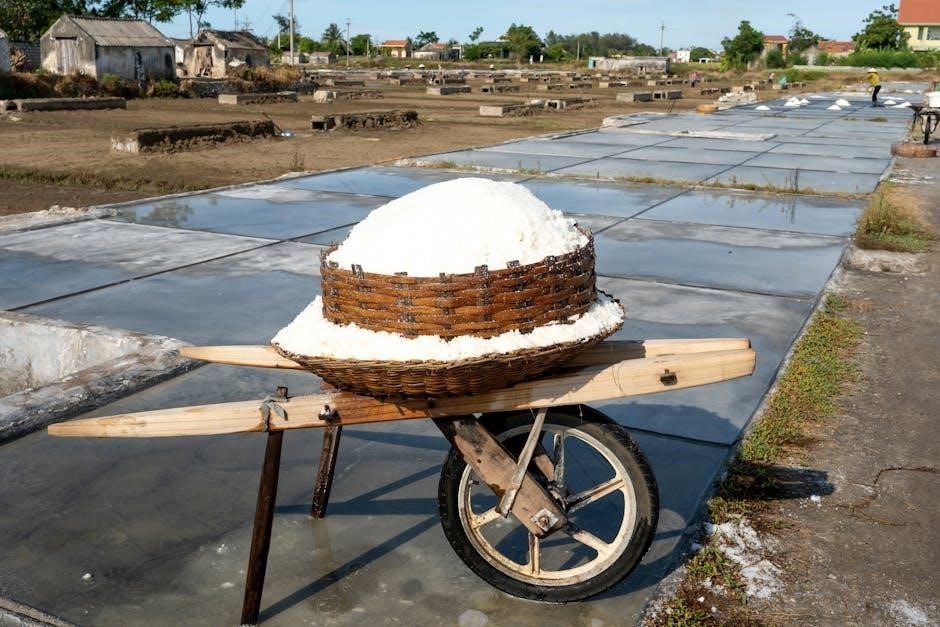
Safety Equipment for Repair Work
Safety Equipment for Repair Work
Essential safety equipment for repairing a 1980s Yamaha Sun Classic golf cart includes safety glasses for eye protection, gloves to prevent cuts, and a face mask to avoid inhaling harmful fumes. Steel-toe boots are recommended to safeguard feet from heavy tools or falling parts. Always ensure proper ventilation when working with fuel or electrical systems. Use jack stands for added stability when lifting the cart. A fire extinguisher should be nearby in case of emergencies. Yamaha recommends wearing no loose clothing or jewelry near moving parts. Keep a first aid kit accessible for minor injuries, ensuring a safe and secure repair environment.

Step-by-Step Repair Guides
Step-by-step repair guides offer detailed instructions for common tasks, ensuring efficient maintenance of your Yamaha Sun Classic golf cart with clarity and safety in mind.
Replacing the Air Filter and Spark Plug
Regular maintenance of the air filter and spark plug ensures optimal performance and fuel efficiency for your 1980s Yamaha Sun Classic golf cart. Start by locating the air filter, typically under the seat or near the engine. Inspect and replace it with a new one if dirty or damaged. Next, find the spark plug, usually near the cylinder head. Remove it using a spark plug socket, gap the new plug to specifications, and install it securely. Refer to your manual for torque settings. Always use genuine Yamaha parts for reliability and durability. Proper maintenance enhances engine longevity and prevents potential issues down the road.
Adjusting the Brakes for Optimal Performance
Adjusting the brakes on your 1980s Yamaha Sun Classic golf cart is crucial for ensuring safe and reliable operation. Begin by consulting the repair manual to locate the brake system components, which may include brake pads, cables, or hydraulic lines. Use a wrench or pliers to access these parts, ensuring the cart is on level ground and secured with blocks or the parking brake engaged for safety. If the brakes are hydraulic, bleeding the system may be necessary to remove air bubbles. For mechanical systems, adjust the cable tension according to the manual’s specifications. Check for specific torque settings and apply lubrication as needed to moving parts. After adjustments, test the brakes at a slow speed to ensure proper functionality. If uncertain, seek professional assistance to avoid safety risks.
Inspecting and Replacing the Battery
Inspecting and replacing the battery in your 1980s Yamaha Sun Classic golf cart is essential for maintaining reliable performance. Start by disconnecting the negative terminal to ensure safety. Clean the terminals and cables using a wire brush and baking soda solution to remove corrosion. Check the battery voltage using a multimeter; a fully charged battery should read around 12.6V. If the battery shows signs of aging, swelling, or low voltage, replace it with a compatible 12V deep-cycle battery. Reconnect the terminals securely, ensuring proper polarity. Test the cart’s electrical systems to confirm the battery is functioning correctly. Always wear gloves and protective eyewear during this process.
Bleeding the Fuel System
Bleeding the fuel system of your 1980s Yamaha Sun Classic golf cart is necessary after replacing the fuel filter, running out of fuel, or if air enters the system. Start by ensuring the fuel tank is at least half full; Use the fuel pump primer to pressurize the system. Turn the ignition key to the “ON” position but do not start the engine. Allow the fuel to flow through the lines, and check for leaks at connections. If the engine doesn’t start after a few attempts, crank it in short bursts to purge air from the carburetor. Always wear protective gloves and eyewear during this process.
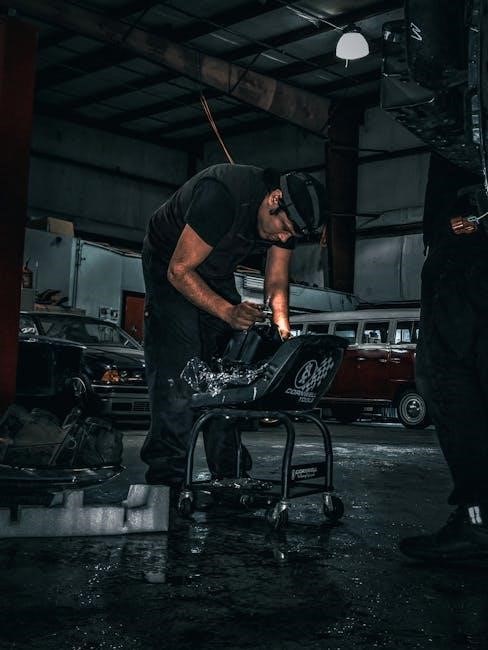
Advanced Repair Techniques
Advanced techniques involve complex procedures like engine overhauls, transmission rebuilds, and electrical upgrades, requiring specialized tools and expertise for 1980s Yamaha Sun Classic golf carts.
Overhauling the Engine
Overhauling the engine of a 1980s Yamaha Sun Classic golf cart involves dismantling the unit, inspecting, and replacing worn components like piston rings, bearings, and gaskets. Start by draining the oil and removing the engine from the cart. Use specialized tools to disassemble the cylinder head, crankshaft, and camshaft. Inspect each part for wear and damage, replacing as needed. Reassemble the engine with new seals and gaskets, ensuring proper torque specifications. Finally, refill the oil and test the engine for smooth operation. This process requires mechanical expertise and adherence to Yamaha’s official repair manual guidelines for optimal results.
Rebuilding the Transmission
Rebuilding the transmission of your 1980s Yamaha Sun Classic golf cart requires careful disassembly and inspection of internal components. Start by removing the transmission unit and draining any remaining fluid. Clean all parts thoroughly to assess wear or damage. Replace gears, bearings, and seals as needed, using genuine Yamaha parts for optimal performance. Reassemble the transmission in the reverse order of disassembly, ensuring all components are properly aligned and secured. Finally, refill with the recommended fluid and test the cart to ensure smooth operation. Regular transmission maintenance can prevent costly repairs and extend the cart’s lifespan.
Upgrading Electrical Components
Upgrading electrical components in your 1980s Yamaha Sun Classic golf cart can significantly enhance performance and reliability. Consider modernizing the ignition coil, starter motor, and wiring harness for better efficiency. Installing a high-capacity alternator ensures consistent battery charging. LED lighting upgrades improve visibility while reducing power consumption. Always use genuine Yamaha parts or compatible aftermarket components to maintain system integrity. Consult the repair manual for specific procedures and safety guidelines. Testing each component after installation is crucial to ensure proper functionality. Keep your cart running smoothly with these electrical upgrades.
Refurbishing the Chassis
Refurbishing the chassis of a 1980s Yamaha Sun Classic golf cart involves sanding, cleaning, and repainting to restore its structural integrity and appearance. Start by removing all components, including the engine and suspension, to access the frame. Inspect for rust or damage and repair or replace affected areas. Use a wire brush or sandblaster to remove corrosion, then apply a rust-inhibiting primer and high-quality paint. Reassemble the cart, ensuring proper alignment of all parts. This process not only enhances durability but also improves the cart’s overall performance and longevity. Regular chassis maintenance is essential for preventing long-term damage.

Miscellaneous Tips and Resources
Online forums offer valuable advice from experienced owners and mechanics. Local repair shops provide hands-on expertise and parts. Parts suppliers offer genuine and aftermarket components. Warranty information ensures coverage details.

Using Online Forums for Repair Advice
Online forums are invaluable for DIY enthusiasts working on 1980s Yamaha Sun Classic golf carts. Communities like Golf Cart Forum or Yamaha-specific groups offer real-time advice from experienced owners and technicians. Members often share detailed repair experiences, troubleshooting tips, and recommendations for hard-to-find parts. These platforms allow you to ask specific questions, post images of issues, and receive tailored guidance. Additionally, forums frequently include downloadable resources, such as DIY guides or wiring diagrams, shared by members. Engaging with these communities fosters a sense of camaraderie and ensures you stay informed about best practices and safety protocols for your repairs.
Local Repair Shops and Specialists
Local repair shops and specialists are invaluable resources for maintaining and repairing your 1980s Gas Yamaha Sun Classic Golf Cart. These professionals often have extensive experience with older models and can provide tailored advice and services. Many local shops specialize in golf cart repairs, offering diagnostics, part replacements, and routine maintenance. They may also have access to genuine Yamaha parts or compatible alternatives. Building a relationship with a trusted local mechanic ensures personalized service and timely solutions for specific issues. Additionally, local shops can perform on-site diagnostics, saving you the hassle of transporting your cart. Their expertise can be a game-changer for long-term performance and reliability.
Parts Suppliers and Catalogs
When restoring or repairing your 1980s Gas Yamaha Sun Classic Golf Cart, accessing the right parts is crucial. Genuine Yamaha parts ensure compatibility and durability, while aftermarket options can offer cost-effective solutions. Authorized Yamaha dealers and specialty golf cart shops often carry vintage parts or can order them directly. Online marketplaces like eBay and RockAuto also provide a wide range of components. Additionally, vintage golf cart enthusiast communities and forums frequently list rare or hard-to-find parts. Always verify part numbers with your repair manual to ensure correct compatibility. Using genuine or high-quality replacement parts guarantees optimal performance and longevity for your classic cart.
Warranty and Support Information
For 1980s Yamaha Sun Classic golf carts, the original manufacturer warranty has likely expired due to age. However, Yamaha may still offer support through their official website or authorized dealers. Extended warranties or service plans might be available for purchase, providing coverage for repairs and replacements. Additionally, third-party providers often offer extended warranty options tailored for vintage or classic vehicles. It’s recommended to contact Yamaha directly or visit their official site for the most accurate and up-to-date information. Online forums and communities dedicated to Yamaha golf carts can also serve as valuable resources for troubleshooting and repair advice.
Restoring and maintaining your 1980s Gas Yamaha Sun Classic Golf Cart requires dedication and the right resources. Regular maintenance ensures optimal performance, safety, and longevity. Always use genuine Yamaha parts for reliability. Stay connected with repair communities for advice and support. Prioritize safety during repairs to avoid accidents. Happy tinkering!
Final Tips for Successful Repairs
When tackling repairs on your 1980s Yamaha Sun Classic golf cart, ensure you have all necessary tools and parts before starting. Always reference the repair manual for specific instructions and torque specifications. Work in a well-ventilated area, and wear safety gear like gloves and goggles. Double-check connections and adjustments to avoid costly mistakes. Take photos of complex components before disassembling them for easier reassembly. Test the cart thoroughly after completing repairs to ensure proper functionality. Patience and attention to detail are key to achieving professional-grade results. Regular maintenance will extend the life of your cart and prevent future issues.
Encouragement to Use Genuine Yamaha Parts
When repairing your 1980s Gas Yamaha Sun Classic Golf Cart, it is highly recommended to use genuine Yamaha parts. These parts are specifically designed to fit your cart’s specifications, ensuring optimal performance and durability. Genuine parts are rigorously tested to meet Yamaha’s quality standards, reducing the risk of compatibility issues or premature wear. They also maintain your cart’s safety and reliability, which is crucial for both recreational and professional use. Investing in genuine Yamaha parts supports long-term savings by minimizing the need for frequent repairs. Always prioritize authentic components to preserve your golf cart’s integrity and functionality.
Importance of Regular Maintenance
Regular maintenance is crucial for extending the lifespan and performance of your 1980s Yamaha Sun Classic golf cart. Routine checks on the engine, brakes, and electrical systems help prevent unexpected breakdowns and ensure reliability. Neglecting maintenance can lead to costly repairs and safety hazards. By following the repair manual’s guidelines, you can identify and address issues early, such as worn brake pads or clogged air filters. Proper upkeep also enhances fuel efficiency and overall functionality. Consistent maintenance not only protects your investment but also ensures the cart runs smoothly for years to come. Stay proactive to keep your Yamaha Sun Classic in optimal condition.
Staying Safe While Performing Repairs
When working on your 1980s Yamaha Sun Classic Golf Cart, safety is paramount. Always wear protective gear, including gloves and safety goggles, to prevent injuries. Ensure the cart is on a level surface and apply the parking brake. Disconnect the battery before starting any electrical work to avoid shocks or short circuits. Use jack stands for lifting, as they provide greater stability than a standard jack. Keep a fire extinguisher nearby, especially when dealing with fuel or electrical systems. Never smoke or work near open flames while handling flammable materials. Proper ventilation is essential when working with chemicals or painting. By following these precautions, you can minimize risks and ensure a safe repair process.


